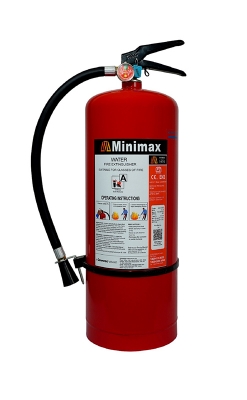ABC Powder Type

| Specifications | 1 kg | 2 kg | 4 kg | 6 kg | 9 kg |
| Fire Rating - MAP 50 | 1A 21B | 2A 34B | 3A 55B | 4A 144B | 6A 144B |
| Fire Rating - MAP 90 | 1A 21B | 2A 55B | 4A 144B | 4A 144B | 6A 233B |
| Working Temperature °C | -30 °C to +60 °C | ||||
| Burst Pressure | 55/80 bar min., 110 bar (actual) approx | ||||
| Cylinder Testing Pressure | 35 bar for 30 sec. | ||||
| Operating Pressure | 15 bar | ||||
| Min. Effective Discharge Time | 8 sec. | 13 sec. | 15 sec. | ||
| Propellant | Dry Nitrogen | ||||
| Charge | ABC Dry Powder (MAP50 / MAP90) | ||||
One of the most versatile type of firefighting equipment, dry powder fire extinguishers are the most popular choice because of their capability for protection against light, ordinary and high hazards. ABC dry chemical powder fire extinguishers are suitable for use on Class A (ordinary solids), Class B fires (flammable liquids) and Class C fires (flammable gases). The ABC type fire extinguishers can also be used on electrically actuated fires. Dry powder fire extinguishers carry a blue colour band which is clear and easy to see in the event of any emergency.
Dry powder stored pressure fire extinguishers filled with silicon coated mono ammonium phosphate dry chemical powder is available with MAP 50% or MAP 90% as per customer requirements.
With a choice of portable stored pressure type extinguishers, our range caters to all customer requirements.
Look For More
FAQ's
- Class A, B and C Fire Hazard – Fire Extinguisher within 15 m travel distance.
- Class D, F and Special Fire Hazard – Fire extinguisher within 10 m travel distance.
















